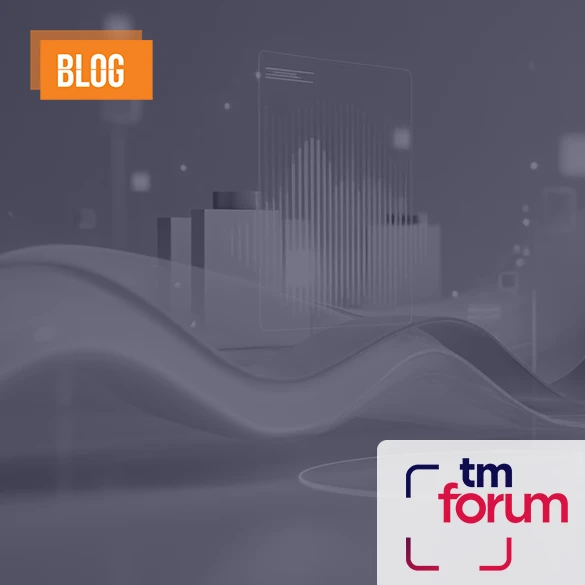Boosting the value proposition of Customer Digital Twins with AI


As smartphone adoption has expanded globally, so too has the amount of data generated by a single user. This information provides a unique insight into the behaviour of individuals; initially, this offered organisations a valuable opportunity to offer a reactive response to a user’s actions, but as technology progresses and AI becomes increasingly prevalent, companies can increasingly harness user data to predict user behaviour by creating a profile – or digital twin – of each unique customer.
Digital twin technology has in active use across many sectors for years now, but within the telecommunications sector it has typically been used on the OSS side, with models of an entire organisation used to determine the strategic impact of certain business decisions, such as introducing new products or selecting options for plans. It is only more recently, with advances in AI technology, that using digital twins on the BSS side has become a more practical reality.
Olgay Taş, VP of Product Development at Etiya, notes that the company’s digital twin solutions focus on the BSS side, combining separate data sources to create a digital twin of an individual customer which can then predict customer behaviour and requirements. Integrating these digital twins into the company’s BSS platform can enable a better customer experience, as via AI technology the digital twin can adapt and learn as new data becomes available. The AI algorithms update and redefine the models, ensuring the predictions and classifications remain accurate and relevant.
Customer behaviour and sentiment is always changing and therefore affecting their decisions – including their purchasing decisions. From the service provider’s perspective, if this data can be tracked and continually fed to the digital twin, the AI can learn from these changes and adapt, updating the algorithms to better suit the customer’s needs. With this continual adaptation, the customer always receives the best available customer service or product offers, which allows for hyper-personalisation. This goes beyond segmenting customers into similar groups; most companies currently do this, so to truly stand out from the crowd requires an extra level of individualisation. By creating a digital twin of a specific customer, the provider is able to identify and action the optimal tailored options for them. The benefits of this approach apply to many situations. For example, if a customer encounters any issues and needs to contact a help centre, their interactions generate data that can be fed into the model, allowing it to learn and adapt to new challenges.
Creating a digital twin in a single platform without having separated data sources provides the efficiency to act very quickly in real time, boosting campaign management. Additionally, integrating digital twins into the BSS platform and campaign management or CRM tools enables opportunities on the pricing side, such as providing customers with offers when their contract is about to expire.
This level of personalisation is a new business case in the field of digital twins. The technology has until now typically been used in industrial applications, such as creating digital twins of machinery, IoT devices or entire factories to model possible outcomes. However, creating a digital twin of a customer or a product is a newer concept that creates interesting use cases. Etiya has already integrated many use cases into its BSS platform to create the digital twin of the customer supported by artificial intelligence. Telcos will be able to benefit from these real-world applications of many use cases by using digital twins.
On the customer service side, there is a lot of potential around creating highly personalized service plans tailored to individual customer preferences, usage patterns, and needs. This could include customized data plans, content packages, and service bundles.
Additionally, analyzing digital twin data can provide insights into customer behavior and preferences. Telcos can monetize this information by offering targeted advertising and marketing opportunities to third-party advertisers.
In terms of customer support, digital twins can be used to make offerings more efficient and personalized. Operators could offer premium customer support packages that leverage digital twin data to quickly address customer issues and provide personalized assistance.
The technology can also facilitate customer retention. Digital twins can be used to create comprehensive customer profiles, including historical usage patterns, service interactions, and preferences. By applying predictive analytics to these digital twins, telcos can identify customers at a high risk of churning. For example, if the digital twin analysis reveals a decline in usage or increased customer service interactions, it may indicate dissatisfaction.
Once potential churn risks are identified through digital twin analysis, telcos can create personalized retention offers based on the specific needs and preferences of individual customers. For instance, offering a discounted rate, additional services, or loyalty rewards to customers identified as likely to churn can be a targeted strategy to retain them.
Digital twins also enable real-time monitoring of customer behaviour, which telcos can use to engage with customers proactively. For example, if a customer's usage pattern changes suddenly, such as a decrease in data usage or a shift in call patterns, the telco can reach out to understand and address any issues or concerns the customer may have. Additionally, the technology can provide insights into the quality of service experienced by individual customers. Telcos can identify areas where service quality is lacking, such as network performance issues or service outages, and take proactive measures to address these issues before they lead to customer dissatisfaction and potential churn.
Etiya brings the potential of digital twin technology to telcos with these use cases to satisfy customers more effectively and naturally. This, in turn, leads to personalized customer experience ultimately resulting in improved and more secure revenue.
Author: James Barton, Developing Telecoms
This article was first published on Developing Telecoms








